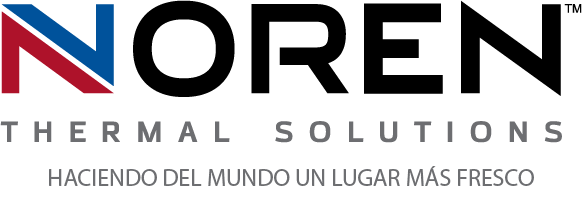 There are several ways in which electrical thermal management has advanced over the years. However, unlike many other forms of technology, this advancement has seen traditional electrical cooling processes become simpler and more natural, rather than more technologically complex. For example, some of the more advanced forms of electrical cooling that companies rely on today are designed to utilize natural methods of transferring heat, rather than the more complex processes required for traditional HVAC cooling. Today, heat exchangers are also able to provide better ways of achieving below-ambient cooling to help companies eliminate their reliance on older cooling solutions even further.
There are several ways in which electrical thermal management has advanced over the years. However, unlike many other forms of technology, this advancement has seen traditional electrical cooling processes become simpler and more natural, rather than more technologically complex. For example, some of the more advanced forms of electrical cooling that companies rely on today are designed to utilize natural methods of transferring heat, rather than the more complex processes required for traditional HVAC cooling. Today, heat exchangers are also able to provide better ways of achieving below-ambient cooling to help companies eliminate their reliance on older cooling solutions even further.
The need for below-ambient electrical cooling
As heat exchangers first gained prominence as electrical cooling solutions, companies and technology designers learned first-hand that ambient cooling was more than sufficient for most applications. Since most have maximum operating temperatures well above the ambient temperatures outside of their enclosures, these applications can operate effectively and efficiently without having to significantly lower the temperatures inside of them. However, this doesn’t apply to all applications within every industry. In many applications, thermal management requirements demand the use of below-ambient electrical cooling, either because the temperature outside of the electrical enclosures is too high, or because the system itself produces enough electrical waste heat to warrant it.
The challenges of below-ambient cooling
Until heat exchangers began providing below-ambient cooling capabilities, companies that relied on applications with below-ambient cooling needs still had to rely on older, more conventional cooling solutions. These often include air conditioners and/or air compressors that can consistently generate chilled air and circulate it throughout the electrical enclosures, effectively keeping the temperatures inside of them well below the ambient temperatures outside of them. However, while these solutions are effective, they can also be costly enough to greatly impact a company’s bottom line and hinder its ability to grow more efficient. Such solutions can also make it more difficult for companies to create more eco-friendly operations due to their large energy requirements and use of potentially harmful chemicals.
Utilizing heat exchangers for below-ambient cooling
Fortunately, companies in many industries have better options for achieving below-ambient electrical cooling thanks to more advanced, often customized heat exchangers. Much like their ambient cooling counterparts, below-ambient heat exchangers are designed to use similar, natural heat transfer processes to redirect electrical waste heat. However, the specific cooling fluid used and the heat transfer processes they rely on are able to bring temperatures inside of electrical enclosures to well below the ambient temperatures outside of them. This allows companies to maintain optimal operations while lowering their overall energy usage and boosting their efficiency and productivity.
For more information about better ways to achieve below-ambient cooling, call Noren Thermal Solutions in Taylor, TX, at 866-936-6736.







